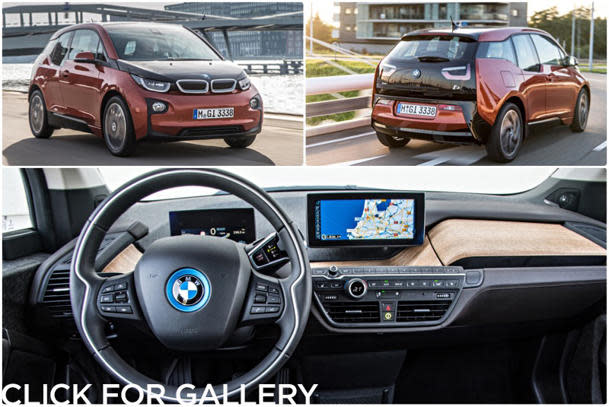 Motoramic
Motoramic2014 BMW i3, the electric revolution arrives: Motoramic Drives
A rotund glasses-wearing man, proudly employed by the new i division of BMW, stood on a platform in front of a large photograph of some indeterminate European skyline. He looked quite self-satisfied, if a little nervous. For 15 minutes, he’d been moving around the room from one platform to another, like an actor in an awkward college staging of a Bertolt Brecht play.
“BMW i,” the man said, “heralds the dawn of a new age of electromobility.”
If history has taught us anything, it’s to be wary of Germans proclaiming “the dawn of a new age.” That said, the BMW i3, which enjoyed its international cotillion last week in Amsterdam, represents a substantial reimagining of how a car should drive, how we interact with our vehicles, and what, in general, a car should be. It’s a significant development in automotive history, and a remarkably nimble one given the size and pedigree of the company.
BMW formed “Project i” in 2007 under the care of Ulrich Kranz, the executive who’d overseen the rebirth of Mini and the highly successful launches of the X3 and X5 SUVs. The goal was to position BMW for the future by thinking of “sustainable mobility concepts.” An initial team of seven people began debating what the car of the future would look like: It had to run on alternative energy, it had to have a trendy modern design, it had to incorporate technology in an intelligent way, and, most of all, it had to suit the lifestyle of the world’s megacities.
Kranz and his team traveled to 20 metropolises, including London, San Francisco, Shanghai, and Mexico City, looking for tech-savvy upper-middle class people who either claimed to, or strived for, “sustainable lifestyles.” In other words, they sought out the BMW customer of the future. The result? An electric car of great quality and efficiency, and — this may be the key genius of the whole concept — made entirely out of materials recycled using renewable energy. As one BMW executive told me, “the next phase in premium is sustainability.” They know what their customers want; the i3 stands for a totally different approach, and may very well end up being the most significant car of its age.
The i3 presents small, and on the outside, it doesn’t look like much, maybe a slightly more chic version of “The Howard,” the electric-car MacGuffin from Larry David’s hilarious HBO movie "Clear History." There’s almost no hood, and the front grilled is framed, rather than with a showy roundel, by plastic slits that look suspiciously like a pair of Ray-Bans. It slopes up to a rear hatchback, and has four doors, though the rear coach doors, hidden almost like a Murphy bed, can only be opened if the front doors are open. At the moment, the i3 only comes in two colors, a fun-looking burnt orange, which will probably become its signature, and a less-fun-looking creamy silver.
Much of BMW's efforts has gone inside. The i3’s designers intended, BMW told us, to create a feeling of a “loft on wheels” that offers an escape from the stresses of city living. It’s made of recycled carbon-fiber and faux-wood paneling, like a tech startup office with an electric motor; all that’s missing is a white board and a ping-pong table. Because the car, essentially, doesn’t have a hood, the dashboard seems to extend forever. The front seats are perfectly poised, and the rear is a little cramped, but basically functional. There’s enough storage in the hatch for a few grocery bags, but the rear seats come down, creating room for whatever errands need to be done.

 Yahoo Autos
Yahoo Autos 

